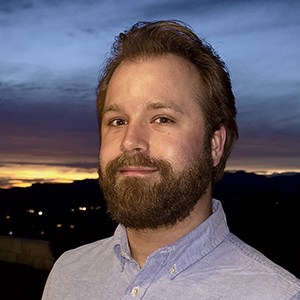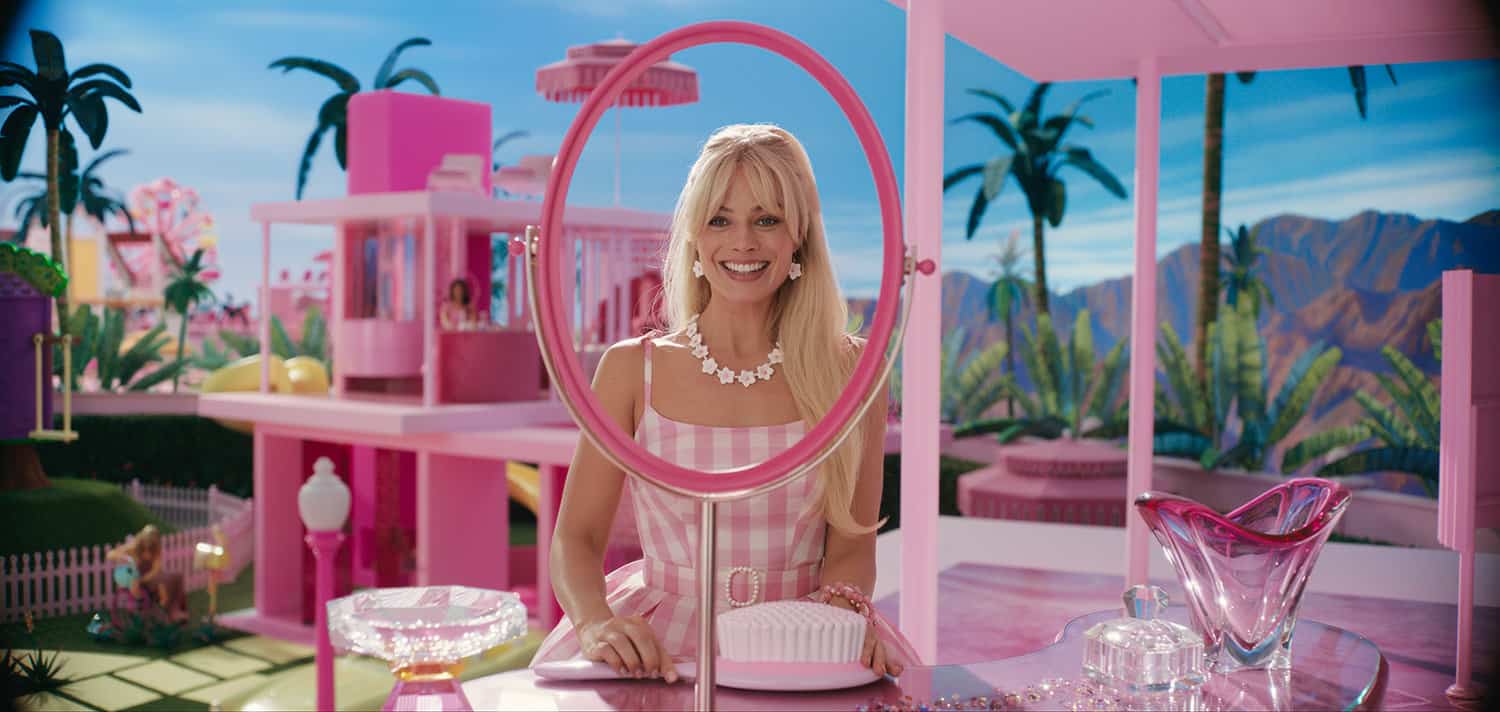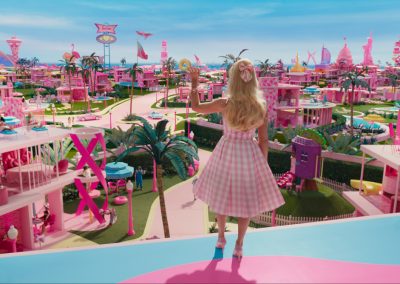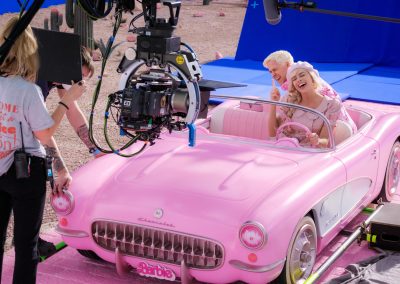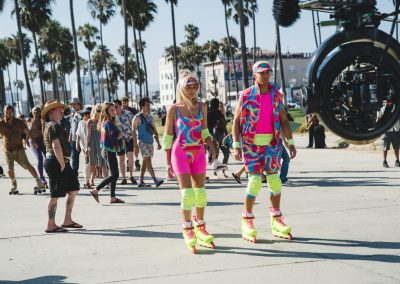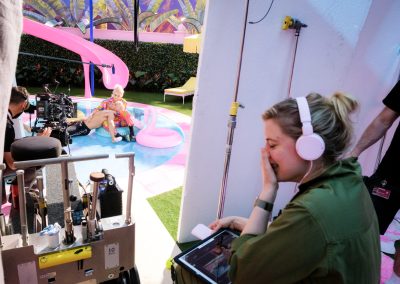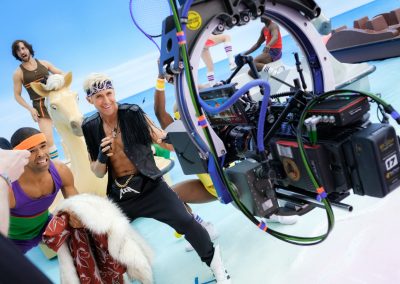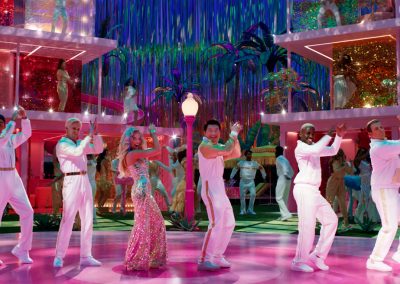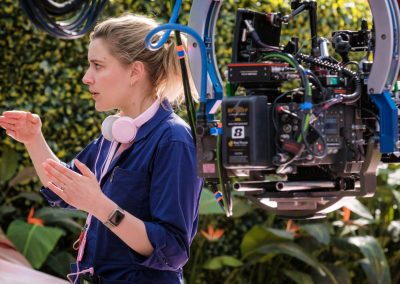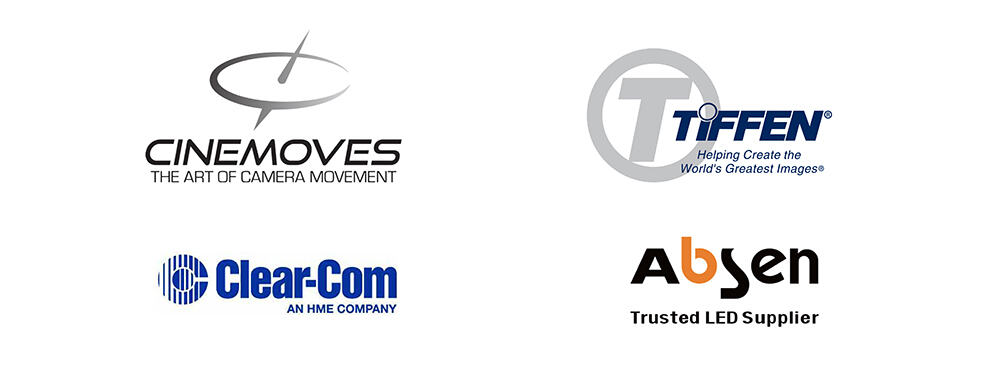Barbie
Mid-Century Postmodern
A Conversation with Chris Bain
By David Daut
A film based on Barbie had been in various stages of development for more than a decade, but when it was announced that Greta Gerwig would be taking on the project hot on the heels of her tremendous work on 2019’s Little Women, it was clear that this was going to be something special. Now, three years later, Barbie has hit with the sort of seismic impact that can be likened only to that of the asteroid that killed the dinosaurs.
To create the colorful fantasy world of Barbieland, the bulk of the film was shot at Warner Bros Studios, Leavesden in the U.K., where Chris Bain worked as A Camera operator. Camera Operator was able to connect with Bain to ask him a few questions about what it was like working on such a unique film.
In Barbieland, every day is perfect. Barbie is a doctor, an astronaut, a lawyer, the entire Supreme Court, and the President. Every day Barbie wakes up in her perfect Dreamhouse, puts on the perfect outfit, says hello to all of the other Barbies in her perfect neighborhood, has a blowout block party with perfect choreography, and ends the day with girls’ night. Oh, and Ken is there too. But one day Barbie’s existence as a flawless, immortal being is compromised when she starts having thoughts about death, finds that her feet have gone flat, and discovers she has developed cellulite. In order to restore order to her perfect life, she must journey to the real world to find the girl who plays with her. Oh, and Ken is there too. Barbie is directed by Greta Gerwig from a screenplay by Gerwig and Noah Baumbach and stars Margot Robbie, Ryan Gosling, America Ferrera, Kate McKinnon, Issa Rae, Rhea Perlman, and Will Ferrel.
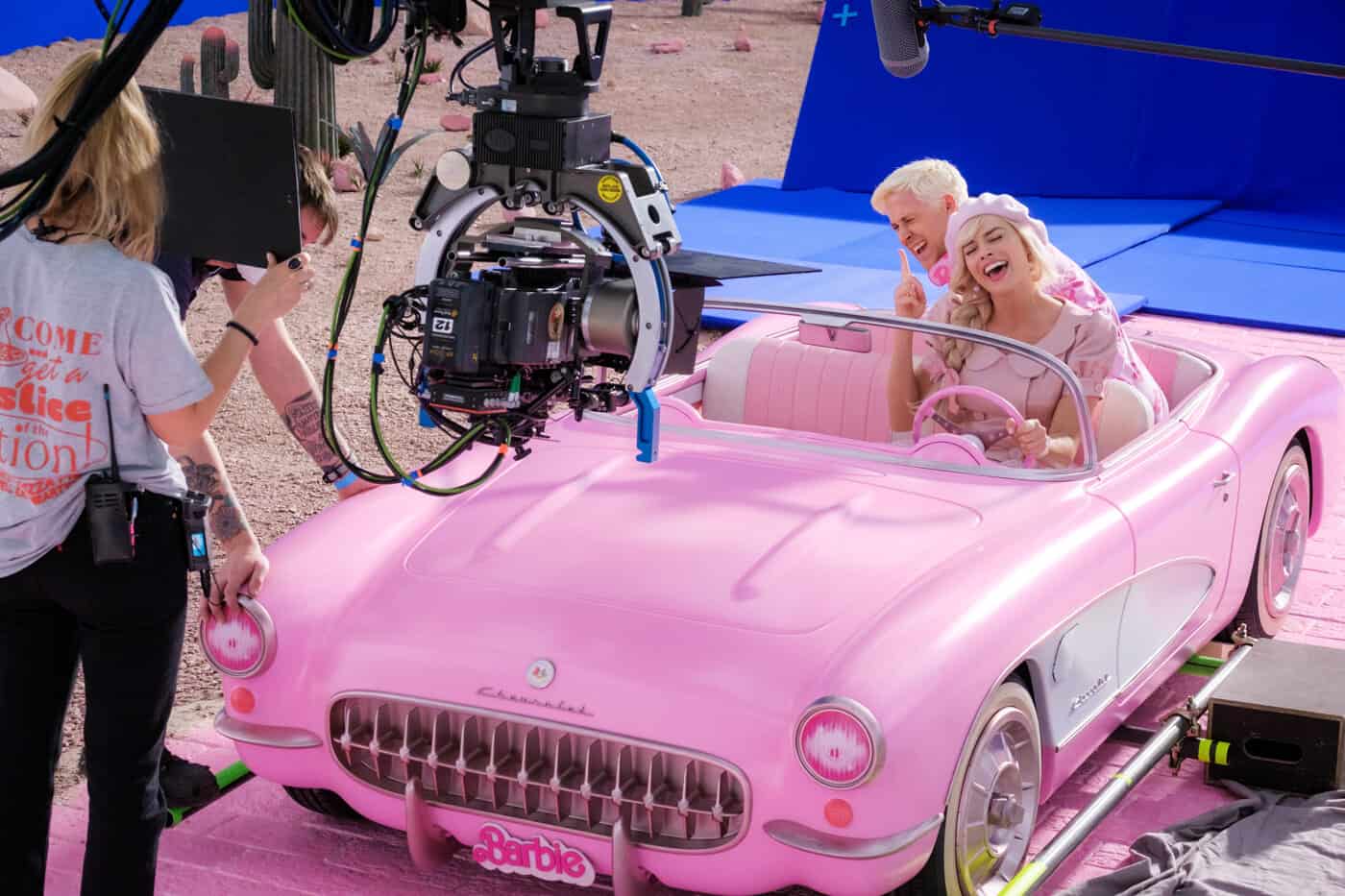
Ryan Gosling as Ken and Margot Robbie as Barbie in BARBIE
A film based on Barbie had been in various stages of development for more than a decade, but when it was announced that Greta Gerwig would be taking on the project, hot on the heels of her tremendous work on 2019’s Little Women, it was clear that this was going to be something special. Now, three years later, Barbie has hit with the sort of seismic impact that can be likened only to that of the asteroid that killed the dinosaurs.
To create the colorful fantasy world of Barbieland, the bulk of the film shot at Warner Bros Studios, Leavesden in the U.K., where Chris Bain worked as A Camera operator. Camera Operator was able to connect with Bain to ask him a few questions about what it was like working on such a unique film.
From Bong Joon Ho to Edgar Wright, Chris Bain has worked with a number of high profile filmmakers, but I’m interested to know how he came to be involved with Barbie. “I was put forward to interview with DP Rodrigo Prieto by line producer Michael Sharp, with whom I had previously worked with on Fantastic Beasts: The Secrets of Dumbledore,” says Bain.
After back–to–back Oscar nominations for Lady Bird and Little Women, it was clear that Greta Gerwig was one of the most vibrant filmmakers in the modern Hollywood landscape. Little Women in particular is—in this writer’s opinion—one of the very best films of the 21st century so far. Her next film was inevitably going to be something special. That she was given a blockbuster budget to make a delightfully strange and gleefully silly feminist satire playing with the iconography of one of pop culture’s most enduring fixtures made it a bonafide event.
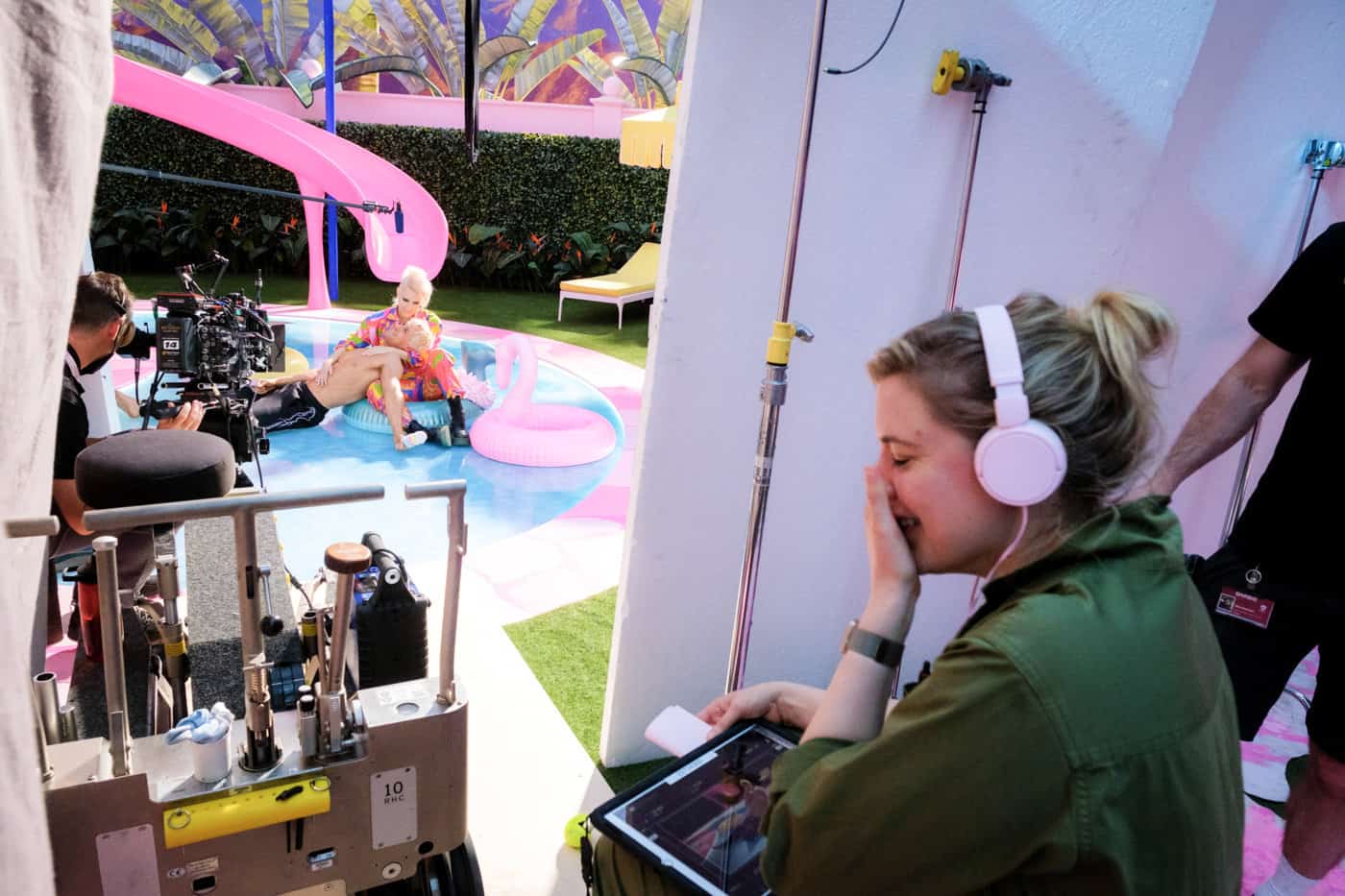
Director Greta Gerwig, Kate McKinnon as Weird Barbie, and Ryan Gosling as Ken
I ask Bain what it was like working with Gerwig on the film. “Obviously the tone on any set is heavily influenced by its director and DOP. With Greta at the helm and Rodrigo as our DOP, we had a fantastic environment to work in. Greta is literally a breath of fresh air on set. She has a great energy and presence whilst maintaining a calm environment to operate and problem-solve in. Very approachable and open to ideas and suggestions throughout the shooting process. She achieves, with actors’ performances, seamless shots where the audience can be unaware of what the camera is doing.”
An example of this sort of seamless filmmaking can be seen in the introduction to the world of Barbieland. As Barbie goes through her daily rituals, the camera glides through the intricate sets in long takes, allowing us to revel in the spectacle of it all, but in a way that feels very classical. In interviews, Gerwig has spoken about wanting to evoke a kind of filmmaking that was more common in the 1950s as an echo of when the Barbie toy was first introduced. This idea most obviously manifests in the commitment to shooting so much of the movie on soundstages with large scale practical sets.
“It was very pink!” Bain says. “Shooting on those sets was a lot of fun, but challenging in many ways too. Stages are never big enough.”
Beyond the practical sets, that mid-century filmmaking style is also there in the way the movie is shot. “Rodrigo and Greta elected to shoot ALEXA 65 for the Barbieland scenes, which is obviously in keeping with the big approach methods seen in the ’50s era. In Barbieland, the camera follows the action with scale and spectacle. The lion’s share of the work utilized cranes to achieve these shots. From an operator’s point of view, I was very aware of how precise and linear the camera needed to be in both movement and composition. Camera moves on drama beats were to be used economically. Key grip Jac Hopkins and his team did a fantastic job in achieving these shots day after day.”
While the innovation of Steadicam wouldn’t arrive until a few decades later, Barbie’s ‘50s pastiche still found a place for more modern technologies. “Choreographed Steadicam was used for the block party dance sequence and in parts of the ‘I’m Just Ken’ musical number, but the camera would always be ‘locked’ whenever possible. I was fortunate here to be working with choreographer Jennifer White, who I’d worked with on Last Night in SoHo and Rocketman. The large shooting format allowed for close coverage on wide lenses, which let us really be with the actors whilst maintaining a pleasing field of view, minus any unwanted distortion. Challenging for any focus puller but A camera 1st AC Max Glickman, supported by the whole camera team, kept sharp focus throughout.”
From the word go, Barbie starts in a place of heightened stylization and overt formalism, but all of that really reaches its zenith in the “I’m Just Ken” musical number and the Kens’ dream ballet. I ask Bain what went into shooting these sequences.
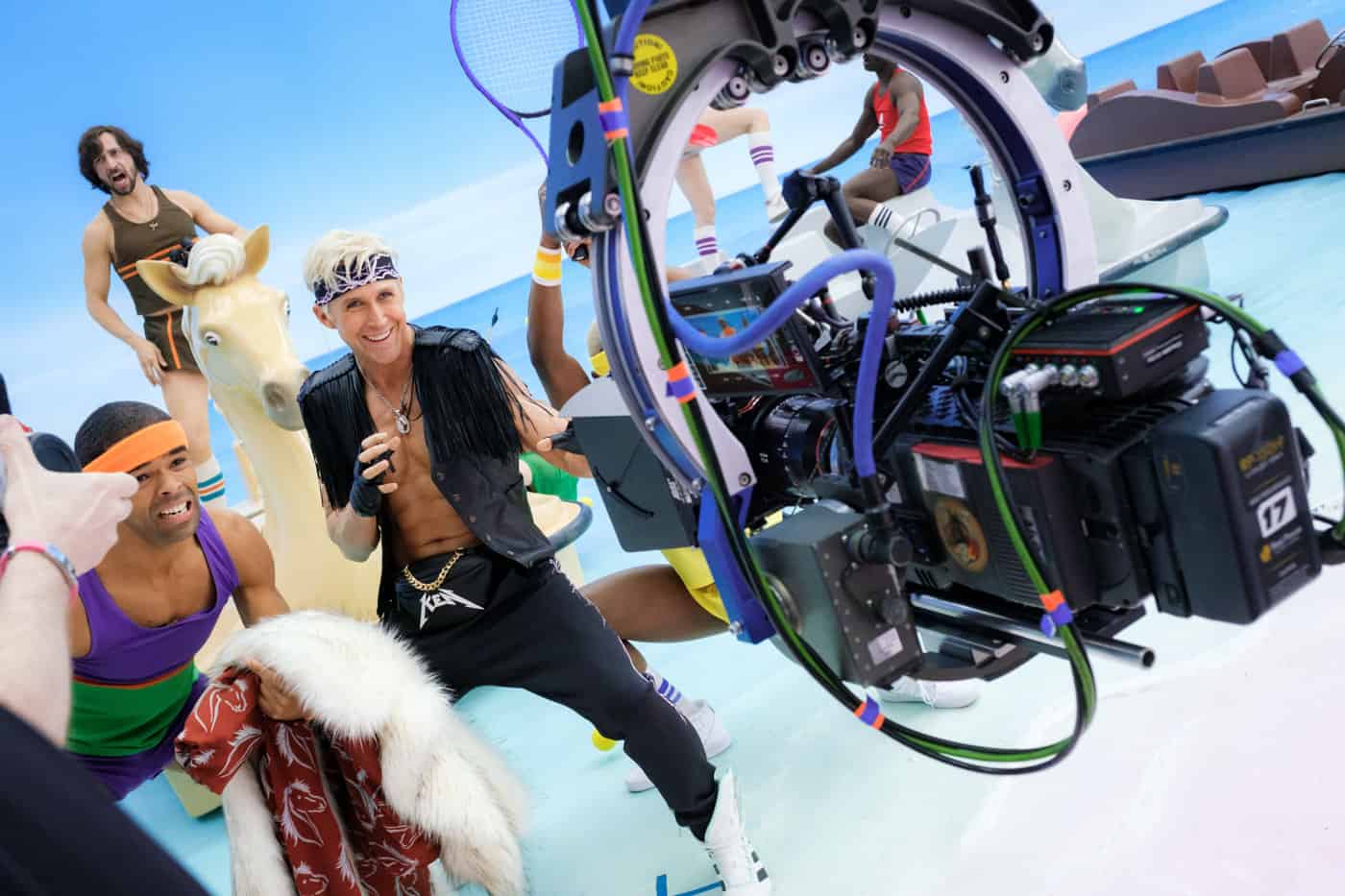
Kingsley Ben-Adir and Ryan Gosling as Kens in BARBIE
“‘I’m Just Ken’ was filmed over a period of days as it was shot across a number of sets with a lot of big setups to achieve. We had multiple cameras for this number, a lot of crane work and a quite complicated double-360-degree Steadicam shot. We had a ball shooting this. Quite often you would hear Rodrigo on the camera comms during takes literally crying with laughter as Ryan Gosling performed his magic. An amazing experience for a camera operator.
“In a lot of ways, the musical number was much more organic in its process than the dream ballet, which we shot in one day. The dream ballet was much more locked down in its choreography and required very precise crane work.”
It’s hard to overstate the impact that Barbie has had on both the landscape of film in 2023 and the broader pop culture conversation. It has enjoyed a kind of sustained success that is increasingly rare, and though it utilizes the iconography of a hyper-popular toy line, it is far stranger and more creatively ambitious than merely being an extended toy commercial. From its prologue aping 2001: A Space Odyssey to its deliriously funny crescendo of the Kens dance-fighting through a metaphorical theatrical void, every scene is filled with a clear creative intentionality and a commitment to outstanding filmmaking craft.
“I feel very lucky to have participated in this film and very pleased for everyone involved that it has received such a huge response,” says Bain. An unforgettable experience from beginning to end.”
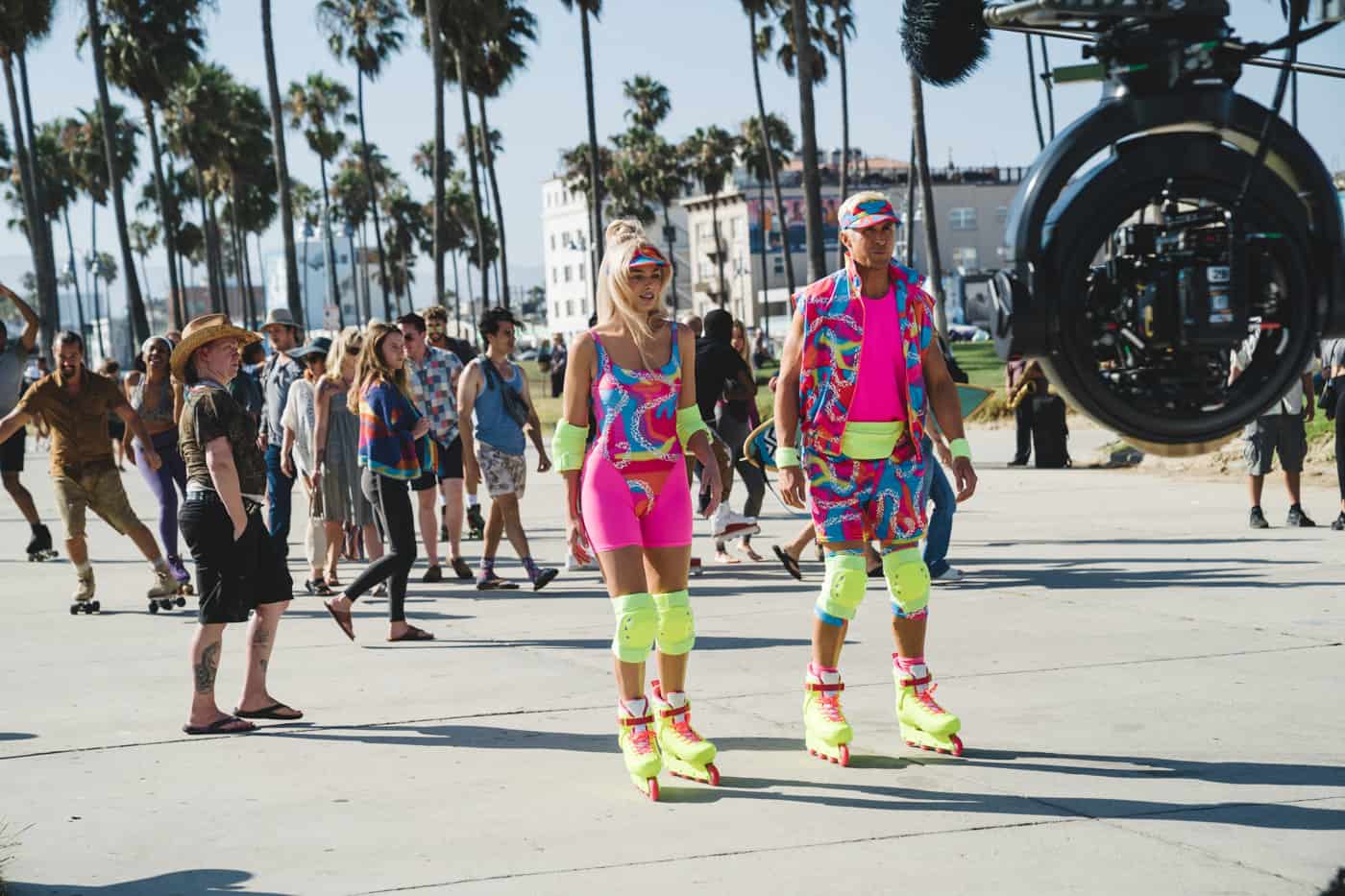
Margot Robbie as Barbie and Ryan Gosling as Ken
Camera Operator Fall 2023
Above Photo: Margot Robbie as Barbie
Photos courtesy of Warner Bros. Pictures
TECH ON SET
ALEXA 65 Camera
Panavision System 65 Primes
23 & 45-foot Scorpio Cranes
75-foot Technocrane with Libra Head
BEHIND THE SCENES
Select Photo for Slideshow
Chris Bain
Chris Bain started working in the film industry as a camera trainee on Sense and Sensibility in 1995, then worked through the grades over a number of years. Chris managed to get onto a Steadicam workshop in 2010 with Garret Brown and Jerry Holway, which inspired him to start operating in 2015. Chris is based out of London and looking forward to going back to work (he is currently midway through Deadpool 3) when the SAG-AFTRA strike is resolved.

David Daut
A writer and critic for more than a decade, David Daut specializes in analysis of genre cinema and immersive media. In addition to his work for Camera Operator and other publications, David is also the co-creator of Hollow Medium, a “recovered audio” ghost story podcast. David studied at the USC School of Cinematic Arts and works as a freelance writer based out of Long Beach, California.
